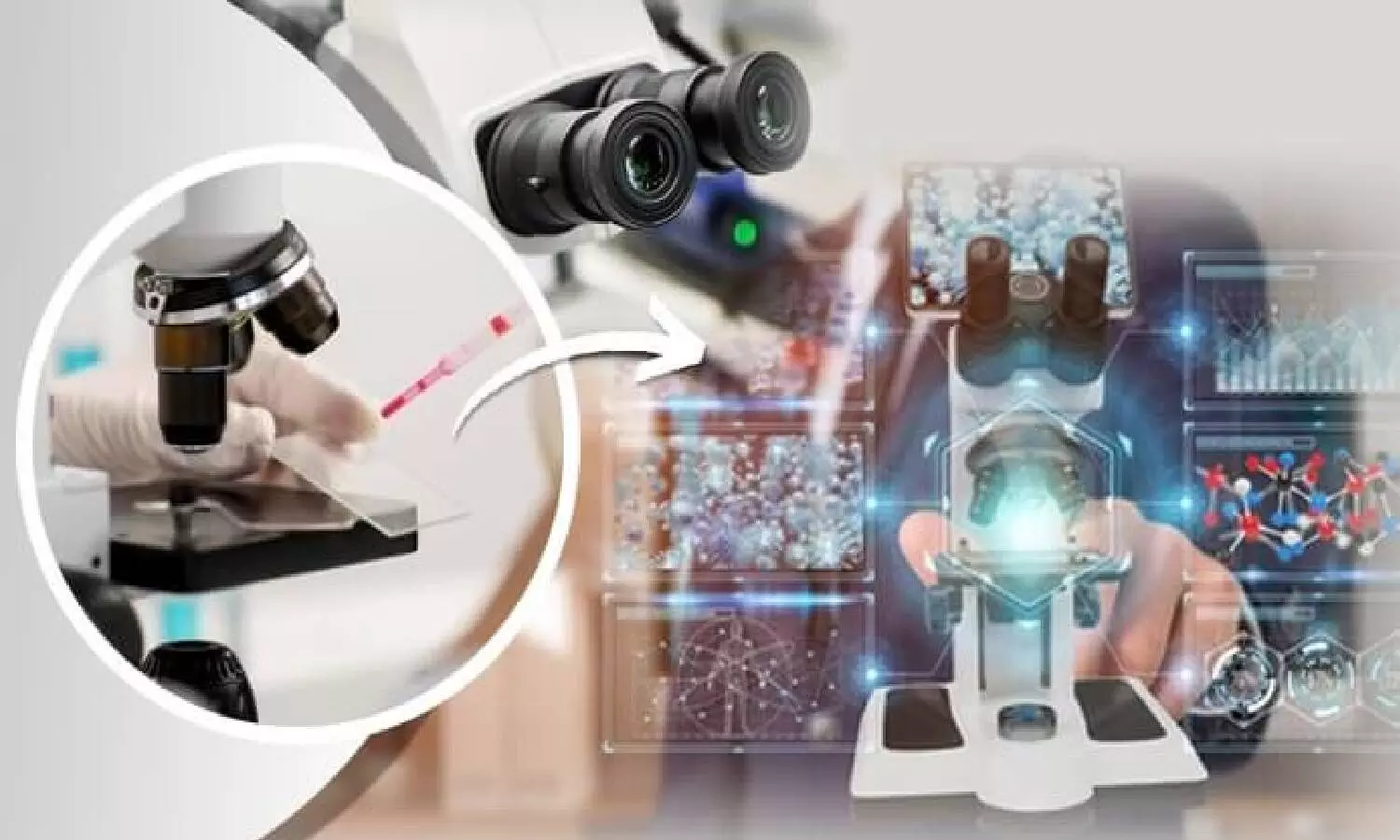IIITH, NIMS collaborate to digitize pathology glass slides
A glass slide, a microscope and a trained eye. These typically make for a traditional pathology process. Here, the affected bodily tissue or sample is microscopically examined by a pathologist to pronounce a diagnosis. However, with Artificial Intelligence making inroads into healthcare, pathology is not far behind.
By Newsmeter Network
Hyderabad: A glass slide, a microscope and a trained eye. These typically make for a traditional pathology process. Here, the affected bodily tissue or sample is microscopically examined by a pathologist to pronounce a diagnosis. However, with Artificial Intelligence making inroads into healthcare, pathology is not far behind.
While globally there has been an interest and increased adoption of computerized imagery in diagnostics, the first Indian efforts in this direction are being enabled by IIIT Hyderabad in collaboration with Nizam's Institute of Medical Sciences (NIMS) Hyderabad.
With the installation of a digital scanner at NIMS to convert traditional histopathological slides into computerized images, IIIT Hyderabad has taken the first step towards the creation of an Indian Pathology Dataset.
Cancer initiative at iHub-Data
IHub-Data (https://ihub-data.iiit.ac.in) at IIITH is a Technology Innovation Hub that has been established under the National Mission on Interdisciplinary Cyber Physical Systems (NM-ICPS) in the area of data driven technologies. The Hub is focused on putting together large-scale datasets to help develop solutions through applied research. Currently efforts are being directed and amplified in the domains of healthcare and smart mobility.
One of the first initiatives in the healthcare domain is currently centered around image diagnosis of cancer. Dr. Vinod P.K who is leading the Cancer initiative at iHub-Data cites a WHO report (that states 1 in 10 Indians will develop cancer during their lifetime) to explain the centre's primary focus on clinical and image-based diagnosis of common types and stages of cancer. Early detection and management are extremely crucial for cancer care.
According to Prof. Deva Priyakumar, the academic head of IHub-Data, "The Indian Pathology Dataset is one such effort where a large-scale data collection of histopathology images specifically from Indian patients will be used to develop AI solutions for accelerated and accurate diagnosis of different types of cancer."
Histopathological process
In traditional histopathology or a biopsy, a tissue sample is routinely processed to make sections out of it. These sections are then stained with pigments onto a glass slide to provide a contrast and reveal cellular components under microscopic observation.
"All of this is a manual and tedious process where a pathologist has to count and see various expressions in morphometry," explains Dr. Shantveer Uppin, head of the department of pathology at NIMS. He adds, "With digitization, the entire slide is scanned and converted into a digital one which can be viewed on a computer and magnified (if required) to look at the finer details."
IIITH's initial collaborative efforts with NIMS are focused on digitizing the existing glass slides to create an Indian dataset of various malignancies. "As a top-rung institute, NIMS attracts a wide variety of patients and consequently has a huge quantity of pathological slides that have been stored for over 15 years," says Dr. Uppin.
With cancer being one of the core areas of iHub's research, the plan is to first create a dataset of histopathological slides. "Within cancer, too, we are targeting the top five common cancers in India, of which lung cancer is one," says Prof. Bapi Raju, the healthcare lead at iHub-Data.
The future is digital
Speaking about the gains to be made by the medical fraternity with digital pathology, Dr. Uppin highlights the enablement of distant reporting or telepathology. "One need not physically transport the glass slides to a pathologist for diagnosis. A mere link to the required image will be enough. This will not only make diagnostics more accessible to all – even those in remote areas - but it will be easier to get a second opinion, too," he says.
Terming digital pathology as a "dynamic generational shift", Dr. Uppin talks of how it is set to upend training and education. "Bigger centres like us (NIMS) have access to so many diagnostic tests. We receive so many new referral cases that are not typically seen in a peripheral medical college. Those students do not have access to the same learning resources because glass slides cannot be transported everywhere and taught. Instead, if they can just be given a link to the same, distant learning becomes a very easy tool for teaching upcoming pathologists there."
Baby steps to biobank
While the collaboration with NIMS marks the initial step towards building a data repository, the team at iHub-Data is exploring a long-term and expansive effort involving a consortium of hospitals and diagnostic centres. "Cancer has a lot of diversity and we need a lot of samples. It's not enough that we engage with one hospital. We are looking at other institutions too that can contribute to this effort – both retrospective and prospective – and participate actively in annotating histopathological samples," says Prof. Bapi.
Likening this effort to the building of a biobank of sorts, Dr. Vinod says that a wide variety of image samples could lead to a repository of datasets for all diseases.